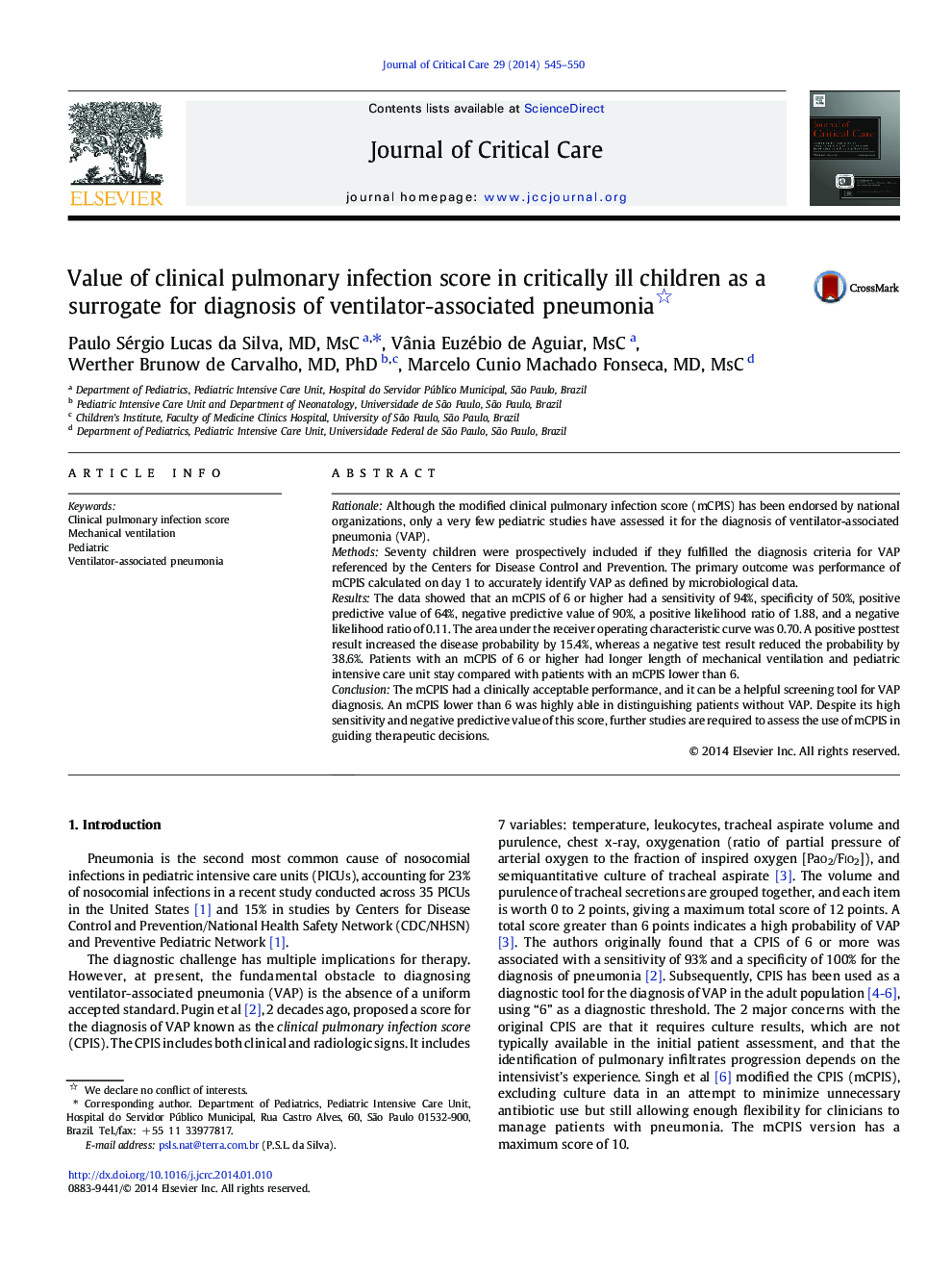| Article ID | Journal | Published Year | Pages | File Type |
|---|---|---|---|---|
| 5886484 | Journal of Critical Care | 2014 | 6 Pages |
RationaleAlthough the modified clinical pulmonary infection score (mCPIS) has been endorsed by national organizations, only a very few pediatric studies have assessed it for the diagnosis of ventilator-associated pneumonia (VAP).MethodsSeventy children were prospectively included if they fulfilled the diagnosis criteria for VAP referenced by the Centers for Disease Control and Prevention. The primary outcome was performance of mCPIS calculated on day 1 to accurately identify VAP as defined by microbiological data.ResultsThe data showed that an mCPIS of 6 or higher had a sensitivity of 94%, specificity of 50%, positive predictive value of 64%, negative predictive value of 90%, a positive likelihood ratio of 1.88, and a negative likelihood ratio of 0.11. The area under the receiver operating characteristic curve was 0.70. A positive posttest result increased the disease probability by 15.4%, whereas a negative test result reduced the probability by 38.6%. Patients with an mCPIS of 6 or higher had longer length of mechanical ventilation and pediatric intensive care unit stay compared with patients with an mCPIS lower than 6.ConclusionThe mCPIS had a clinically acceptable performance, and it can be a helpful screening tool for VAP diagnosis. An mCPIS lower than 6 was highly able in distinguishing patients without VAP. Despite its high sensitivity and negative predictive value of this score, further studies are required to assess the use of mCPIS in guiding therapeutic decisions.
